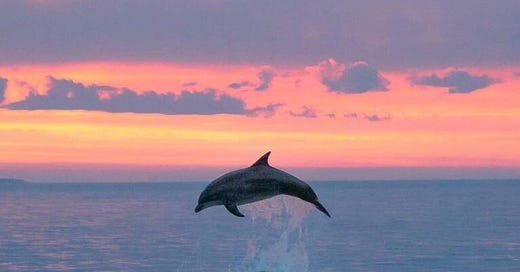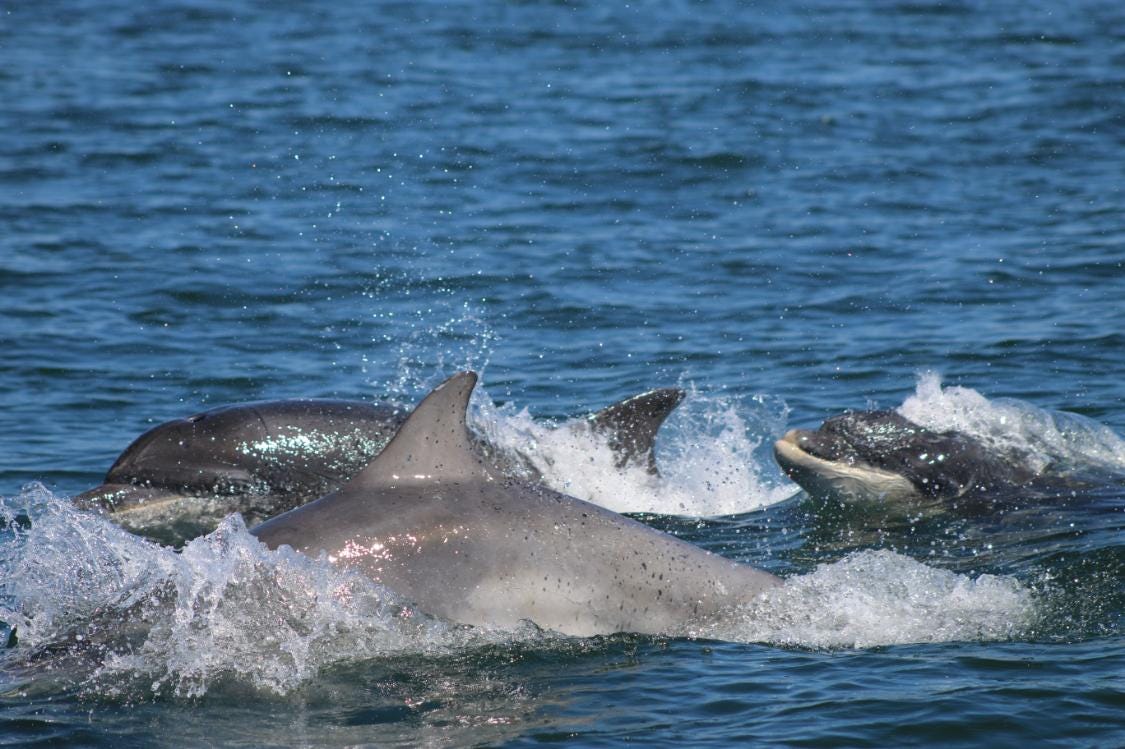'It is reasonable to conclude that we now have Geordie dolphins'
New research sounds out dolphin numbers off the Northumberland coast. Tony Henderson reports
Scientists are tuning into the whistling sounds by which dolphins communicate to estimate the numbers of the species off the coast of Northumberland.
Individual bottle-nosed dolphins can be identified by their ‘signature’ whistles, which have been recorded by hydrophones anchored off Druridge Bay, Newbiggin by the Sea and St Mary’s Island.
This has enabled a Newcastle University research project to calculate that numbers off Northumberland are between 60 to 70 – around a third of the East Coast bottle-nosed dolphin population in an area stretching between the Moray Firth in Scotland and Scarborough.
The team found that the distinctive signature whistles offer a reliable method for estimating the abundance for the species that matched the accuracy of the usual method of using photographic identification of dolphins from a boat.
It means that data can be obtained without the time and effort-consuming need of regular surveys using vessels to make counts.
“This new study contributes novel methods to estimate abundance of dolphins,” said senior study author Per Berggren, Professor of Marine Megafauna Conservation in the School of Natural and Environmental Sciences at Newcastle.
The soundings were collected between August and October and compared to photo-ID data.
The results suggest that the Northumberland coast serves as an important habitat for a substantial portion of the East Coast bottlenose dolphin population.
Northumberland coastal waters have seen an increase in bottlenose dolphin occurrence in recent years with an apparent range shift of the East Coast population associated with the Moray Firth and off the Aberdeenshire coast.
This tallies with the experience of the volunteer-run Newbiggin-by-the Sea Dolphin Watch Association, set up 10 years ago to monitor movements of the species from a vantage point on the town’s bay.
Association chairman Ivor Clark said numbers off Northumberland had increased and dolphins were now seen not just in the warmer months but all year round.
He said that this indicated that some dolphins were breeding off Northumberland, potentially creating a resident population and not as previously thought, animals which were all in transit to and from Scotland.
“It is reasonable to conclude that we now have Geordie dolphins,” he said.
The association has a base at Newbiggin Maritime Centre and runs various activities as well as regular observation sessions from the bay from Easter to October.
“We want people to enjoy seeing dolphins , which is a fantastic experience. It can be uplifting for people to see a dolphin for the first time,” said Ivor.
“We have a great coastline and to also have the dolphins is amazing.
“Provided the food supply stays adequate, and the dolphins are not disturbed by any marine development or exploration, it is likely that individuals from throughout the east coast population will continue to use the coastlines of Northumberland and County Durham.”
The association, in co-operation with cameraman Joe Shelly and wildlife photography student Angus Hutton made a short film called Dolphin Watching, which included a pod of six animals which accompanied the team’s boat Serenity off the Farne Islands.
The maximum number of dolphins seen by association volunteers in one day was 108 in June last year. Peak times for sightings are May-July.
Members have named familiar dolphins such as Runny Paint, a 42-year-old female leader with natural markings on her dorsal fin.
“It looks like somebody has emptied a pot of white paint over her,” said Ivor, Other named dolphins are Flipper and Chips.
Signature whistles function as a means of broadcasting the identity of a dolphin, helping group cohesion, and assisting with mother and calf reunion.
They are individually unique, developed over the first year of life, and remain stable for at least 18 years and possibly for the individual's lifetime.
Newcastle University’s Dr Matt Sharpe said: “Using signature whistles to estimate abundance offers several benefits. The main advantage is that collecting data is less resource intensive than conventional methods.”
Prof Berggren added: “This study not only reinforces the feasibility of using signature whistles for abundance estimation but also provides a foundation for future research using low-cost acoustic methods that can be applied regardless of location, weather and light conditions.
“Long-term monitoring using signature whistle analysis could inform conservation strategies and improve understanding of populations.”







